Effect of Thermal Barrier Coating on the Performance and Emissions of Diesel Engine Operated with Conventional Diesel and Palm Oil Biodiesel
Abstract
1. Introduction
2. Materials and Methods
3. Results
3.1. Engine Emissions
3.2. Engine Performance
4. Discussion
- For piston tested under diesel, the 80/20D with 18.98% indicates highest BTE. For those tested under biodiesel, the 50/50B with 20.37% indicates highest BTE. Overall, biodiesel contributes higher BTE than diesel. At all speeds 60/40D and 50/50B maintain good stability and produce highest BTE for both diesel and biodiesel test fuel. For the rest of the parameters, 90/10B and 90/10D will not be evaluated as the value of the BTE is poor and the engine was underperforming with abnormal vibration. Thus, 90% Y2O3·ZrO2 + 10% Al2O3·SiO2 coating mixture is not a good coating to be considered for TBC.
- For piston tested under diesel, the 80/20D with 557.96 g/kWh indicated lowest BSFC. For that tested under biodiesel, the 50/50B with 519.88 g/kWh indicates lowest BSFC. Overall, biodiesel contributes lowest BSFC than diesel. At all speed 50/50D and 50/50B maintain good stability and produce lower BSFC for both diesel and biodiesel test fuel.
- For piston tested under diesel, the 80/20D with 30.92 Nm indicates highest torque. For that tested under biodiesel, the 70/30B with 32.55 Nm indicates highest torque. Overall, biodiesel produced more torque than diesel. At all speeds 50/50D and 50/50B maintain good stability and produce more torque for both diesel and biodiesel test fuel.
- For all coated pistons tested under diesel, the 80/20D with 3.84 kW indicates highest power. For that tested under biodiesel, the 70/30B with 4.04 kW indicates highest power. Overall biodiesel produced power more than diesel. At all speed 50/50D and 50/50B maintain good stability and produce more power for both diesel and biodiesel test fuel.
- For all coated pistons tested under diesel, the 60/40D with 4.034% indicates lowest amount of CO released. For those tested under biodiesel, the 60/40B with 3.492% indicates lowest amount release of CO. At all speeds 60/40D and 60/40B maintain good stability and release lowest amount of CO for both diesel and biodiesel test fuel.For all coated pistons tested under diesel, the 70/30D with 4.91% indicates lowest amount release of CO2. For those tested under biodiesel, the 60/40B with 6.05% indicates lowest amount release of CO2. At all speeds 60/40D and 50/50B maintain good stability and release lowest amount of CO2 for both diesel and biodiesel test fuel.
- For all coated pistons tested under diesel, the 60/40D with 240 ppm indicates lowest amount release of NO. For those tested under biodiesel, the 60/40B with 240 ppm indicates lowest amount of NO release. Overall, biodiesel releases lower amount of NO compared to diesel. At all speeds 60/40D and 60/40B maintain good stability and release lowest amount of NO for both diesel and biodiesel test fuel.
- For all coated pistons tested under diesel, the 70/30D with 112 ppm indicates lowest amount release of HC. For those tested under biodiesel, the 60/40B with 78 ppm indicates lowest amount release of HC. At all speeds 60/40D and 60/40B maintain good stability and release lowest amount of HC for both diesel and biodiesel test fuel.
5. Conclusions
Author Contributions
Funding
Institutional Review Board Statement
Informed Consent Statement
Data Availability Statement
Conflicts of Interest
References
- Karthickeyan, V.; Balamurugan, P. Effect of thermal barrier coating with various blends of pumpkin seed oil methyl ester in DI diesel engine, Heat and Mass Transfer/Waerme- und Stoffuebertragung. Heat Mass Transf. 2017, 53, 3141–3154. [Google Scholar] [CrossRef]
- Ali, O.M.; Mamat, R.; Abdullah, N.R.; Abdullah, A.A. Analysis of blended fuel properties and engine performance with palm biodiesel-diesel blended fuel. Renew. Energy 2016, 86, 59–67. [Google Scholar] [CrossRef]
- Azadi, M.; Baloo, M.; Farrahi, G.H.; Mirsalim, S.M. A review of thermal barrier coating effects on diesel engine performance and components lifetime. Int. J. Automot. Eng. 2013, 3, 305–317. [Google Scholar]
- Johari, A.; eNyakuma, B.B.; Nor, S.H.M.; Mat, R.; Hashim, H.; Ahmad, A.; Zakaria, Z.Y.; Abdullah, T.A.T. The challenges and prospects of palm oil based biodiesel in Malaysia. Energy 2015, 81, 255–261. [Google Scholar] [CrossRef]
- Demirbas, A. Progress and recent trends in biofuels. Prog. Energy Combust. Sci. 2007, 33, 1–18. [Google Scholar] [CrossRef]
- Hossain, A.K.; Davies, P.A. Plant oils as fuels for compression ignition engines: A technical review and life-cycle analysis. Renew. Energy 2010, 35, 1–13. [Google Scholar] [CrossRef]
- Sakthivel, A.; Selvakumar, P.; Gopalakrishnan, A. Effect of mineral deposition on shrimp litopenaeus vannamei in high alkaline water of pennar river, Andhra Pradesh of southeast coast of India. J. Aquac. Res. Dev. 2014, 5, 5–10. [Google Scholar] [CrossRef]
- Ganapathy, T.; Gakkhar, R.P.; Murugesan, K. Influence of injection timing on performance, combustion and emission characteristics of Jatropha biodiesel engine. Appl. Energy 2011, 88, 4376–4386. [Google Scholar] [CrossRef]
- Masera, K.; Hossain, A.K. Combustion Characteristics of Cottonseed Biodiesel and Chicken Fat Biodiesel Mixture in a Multi-Cylinder Compression Ignition Engine. SAE Tech. Pap. 2019, 1–14. [Google Scholar] [CrossRef]
- Yilmaz, I.T.; Gumus, M. Investigation of the effect of biogas on combustion and emissions of TBC diesel engine. Fuel 2017, 188, 69–78. [Google Scholar] [CrossRef]
- Sharon, H.; Karuppasamy, K.; Kumar, D.R.S.; Sundaretsan, A. A test on DI diesel engine fueled with methyl esters of used palm oil. Renew. Energy 2012, 47, 160–166. [Google Scholar] [CrossRef]
- Işcan, B. Application of ceramic coating for improving the usage of cottonseed oil in a diesel engine. J. Energy Inst. 2016, 89, 150–157. [Google Scholar] [CrossRef]
- Mohamed Musthafa, M. Synthetic lubrication oil influences on performance and emission characteristic of coated diesel engine fuelled by biodiesel blends. Appl. Therm. Eng. 2016, 96, 607–612. [Google Scholar] [CrossRef]
- Wang, P.; Li, J.; Guo, Y.; Wang, J.; Yang, Z.; Liang, M. Effect of zirconia sol on the microstructures and thermal-protective properties of PEO coating on a cast Al-12Si piston alloy. J. Alloys Compd. 2016, 657, 703–710. [Google Scholar] [CrossRef]
- Ramalingam, S.; Rajendran, S.; Ganesan, P. Performance improvement and emission control in a direct injection diesel engine using nano catalyst coated pistons. Biofuels 2016, 7, 529–535. [Google Scholar] [CrossRef]
- Prabhahar, M.; Rajan, K. Performance and combustion characteristics of a diesel engine with titanium oxide coated piston using Pongamia methyl ester. J. Mech. Sci. Technol. 2013, 27, 1519–1526. [Google Scholar] [CrossRef]
- Behçet, R.; Oktay, H.; Çakmak, A.; Aydin, H. Comparison of exhaust emissions of biodiesel-diesel fuel blends produced from animal fats. Renew. Sustain. Energy Rev. 2015, 46, 157–165. [Google Scholar] [CrossRef]
- Dhinesh, B.; Raj, Y.M.A.; Kalaiselvan, C.; KrishnaMoorthy, R. A numerical and experimental assessment of a coated diesel engine powered by high-performance nano biofuel. Energy Convers. Manag. 2018, 171, 815–824. [Google Scholar] [CrossRef]
- Hazar, H. Characterization of MoN coatings for pistons in a diesel engine. Mater. Des. 2010, 31, 624–627. [Google Scholar] [CrossRef]
- Buyukkaya, E. Effects of biodiesel on a di diesel engine performance, emission and combustion characteristics. Fuel 2010, 89, 3099–3105. [Google Scholar] [CrossRef]
- Ahmaniemi, S.; Tuominen, J.; Vippola, M.; Vuoristo, P.; Mäntylä, T.; Cernuschi, F.; Gualco, C.; Bonadei, A.; Di Maggio, R. Characterization of modified thick thermal barrier coatings. J. Therm. Spray Technol. 2004, 13, 361–369. [Google Scholar] [CrossRef]
- Haşimoğlu, C.; Ciniviz, M.; Özsert, I.; İçingür, Y.; Parlak, A.; Salman, M.S. Performance characteristics of a low heat rejection diesel engine operating with biodiesel. Renew. Energy 2008, 33, 1709–1715. [Google Scholar] [CrossRef]
- Krishna, M.V.S.M.; Prakash, T.O.; Ushalsri, P.; Janardhan, N.; Murthy, P.V.K. Experimental investigations on direct injection diesel engine with ceramic coated combustion chamber with carbureted alcohols and crude jatropha oil. Renew. Sustain. Energy Rev. 2016, 53, 606–628. [Google Scholar] [CrossRef]
- Kumar, N.; Varun; Chauhan, S.R. Evaluation of endurance characteristics for a modified diesel engine runs on jatropha biodiesel. Appl. Energy 2015, 155, 253–269. [Google Scholar] [CrossRef]

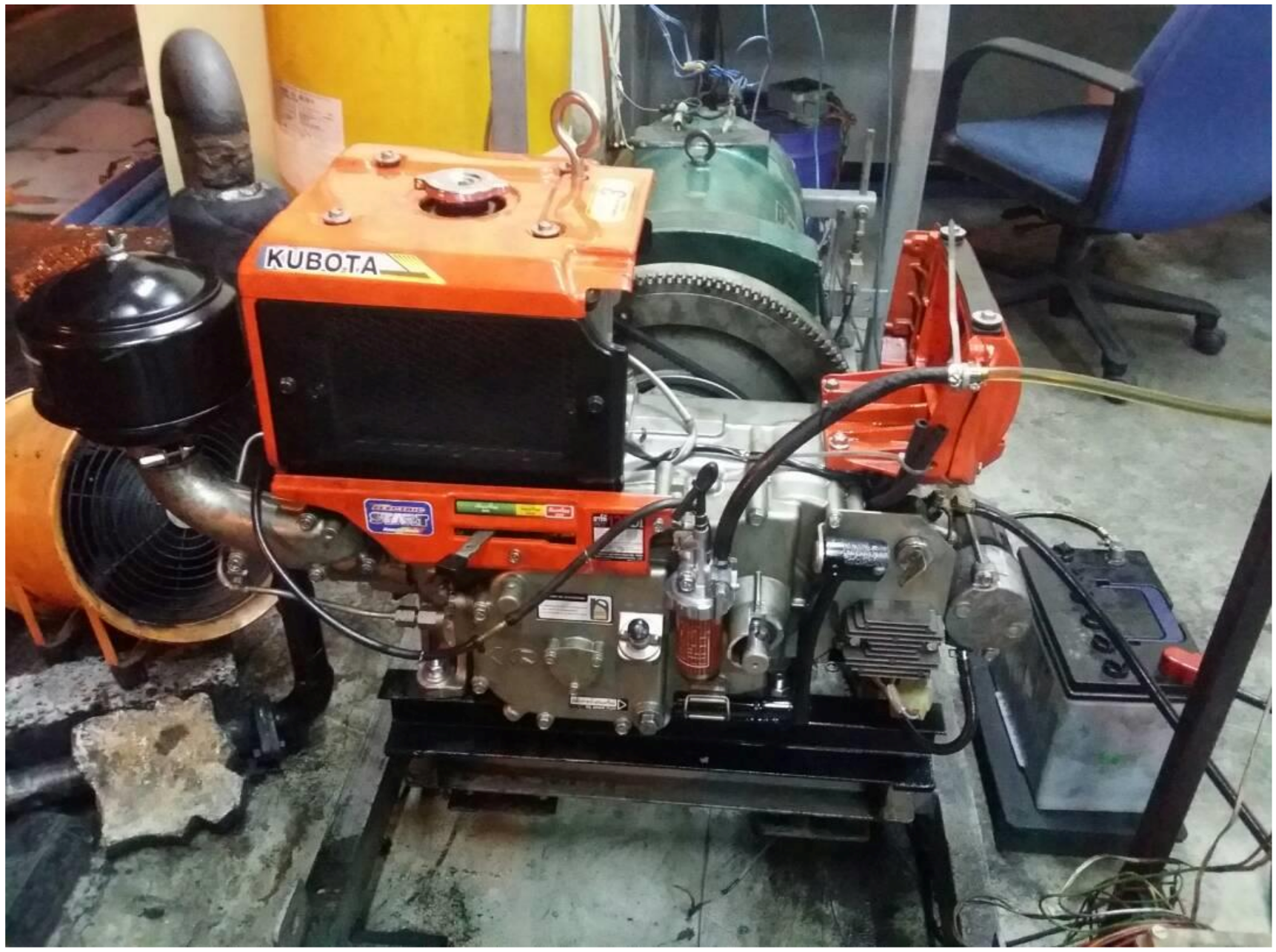
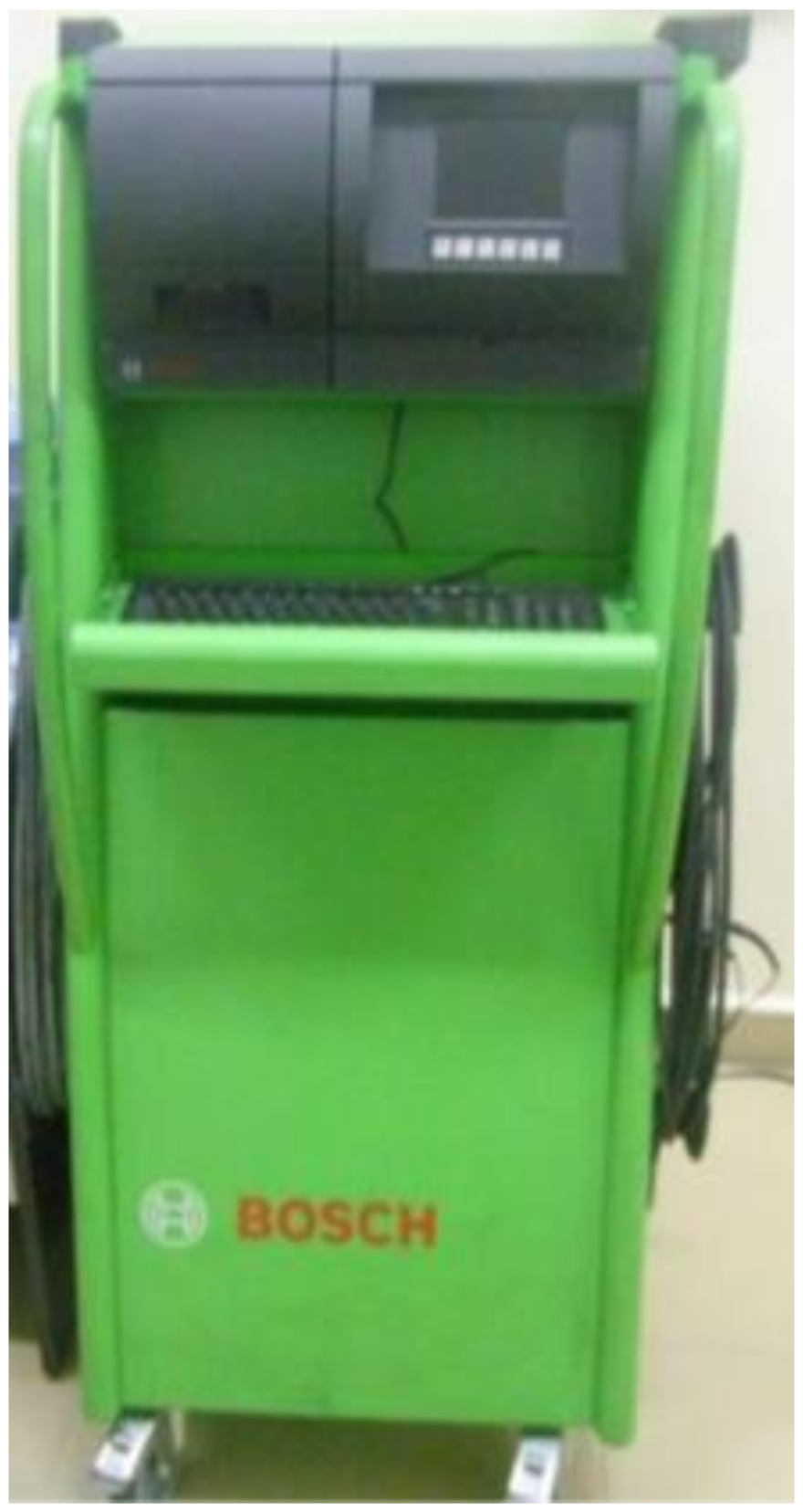

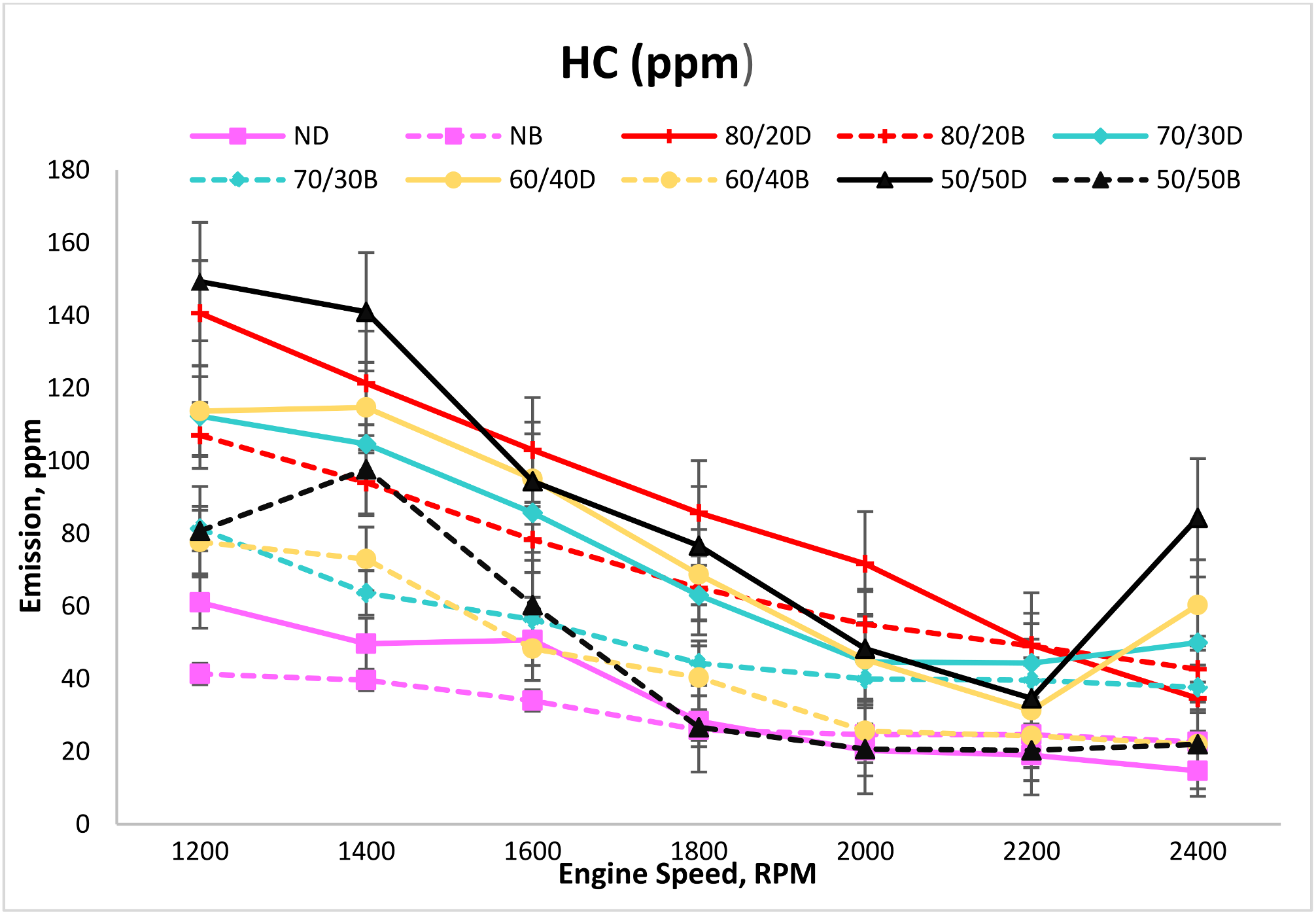

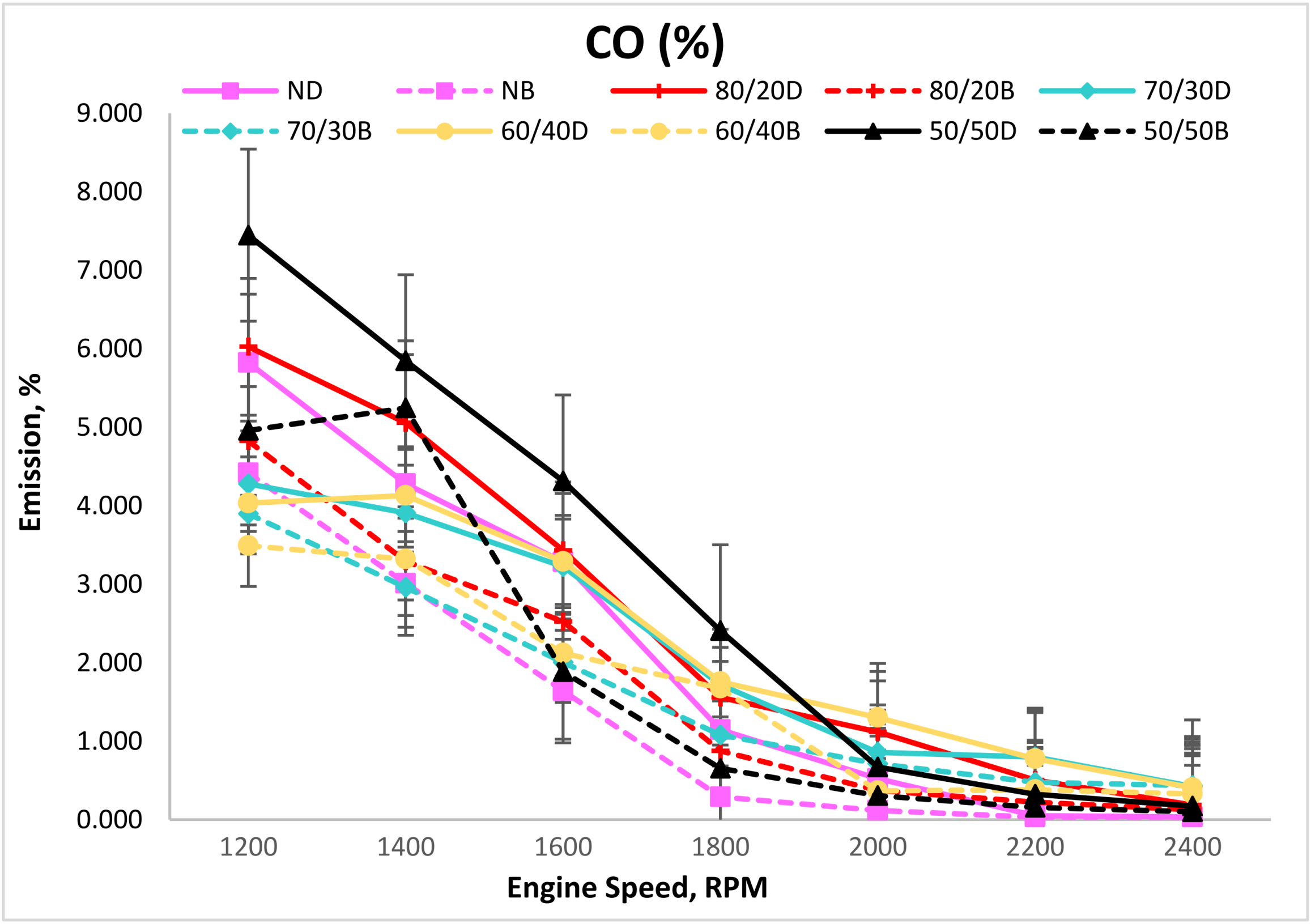

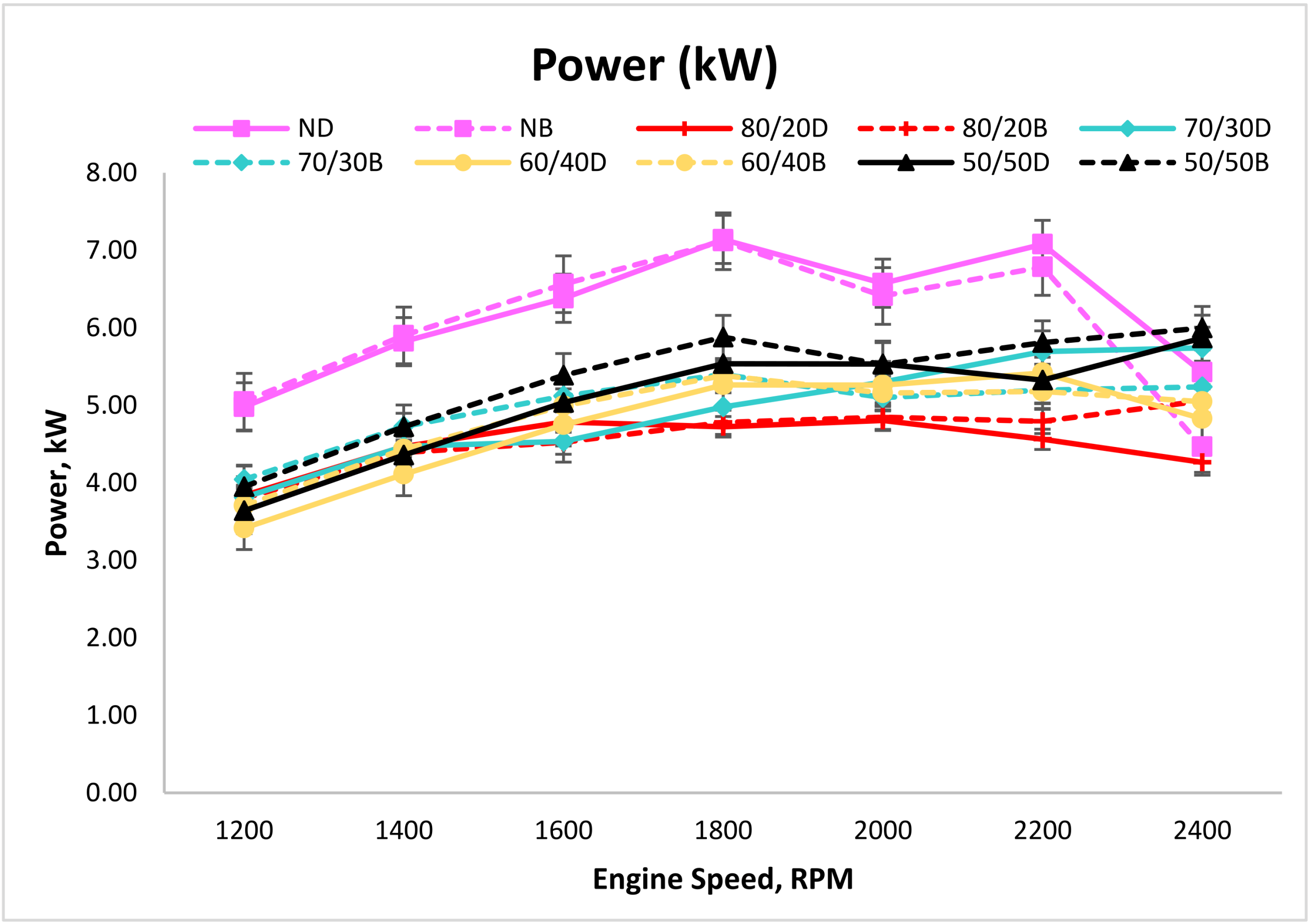
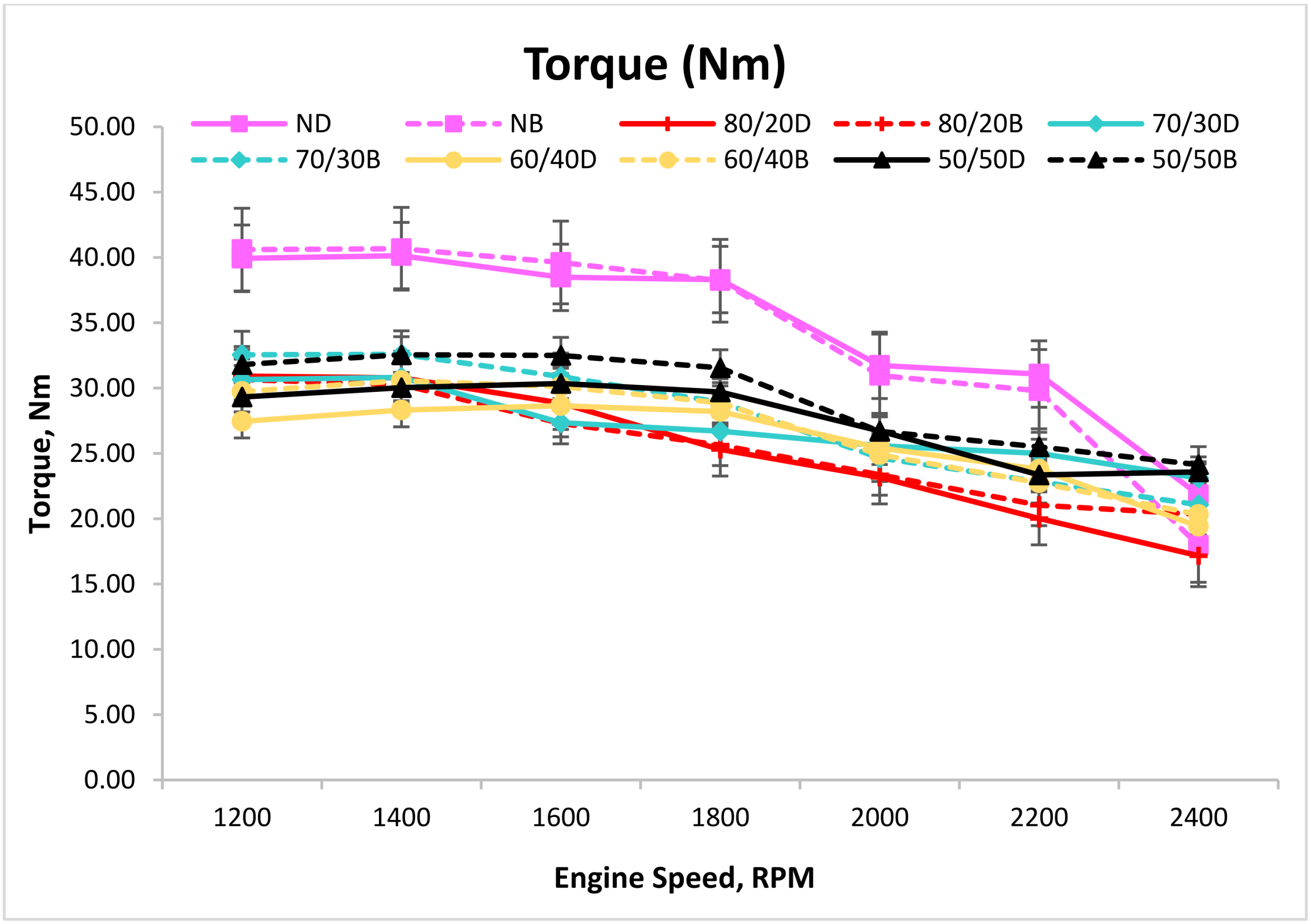
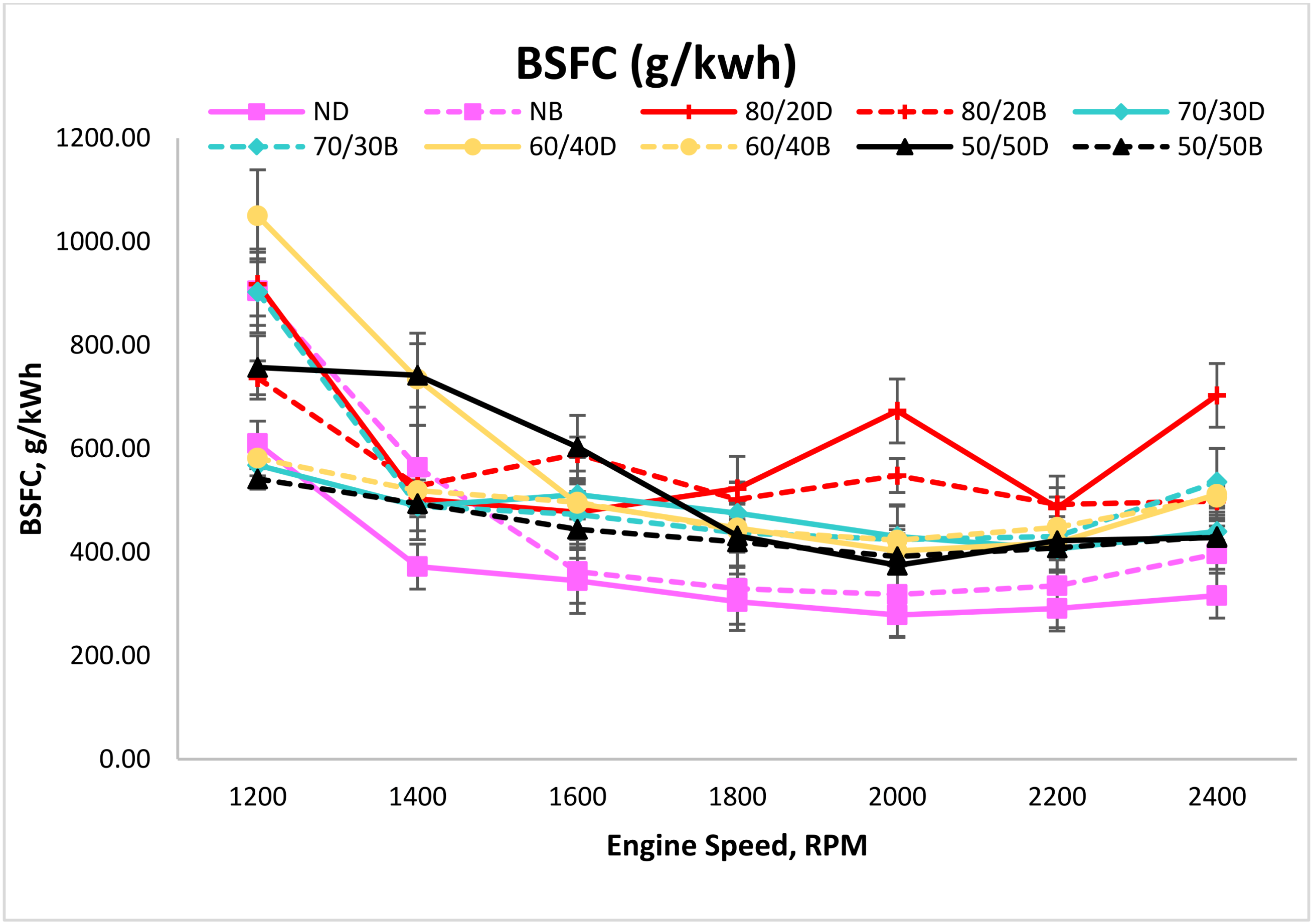
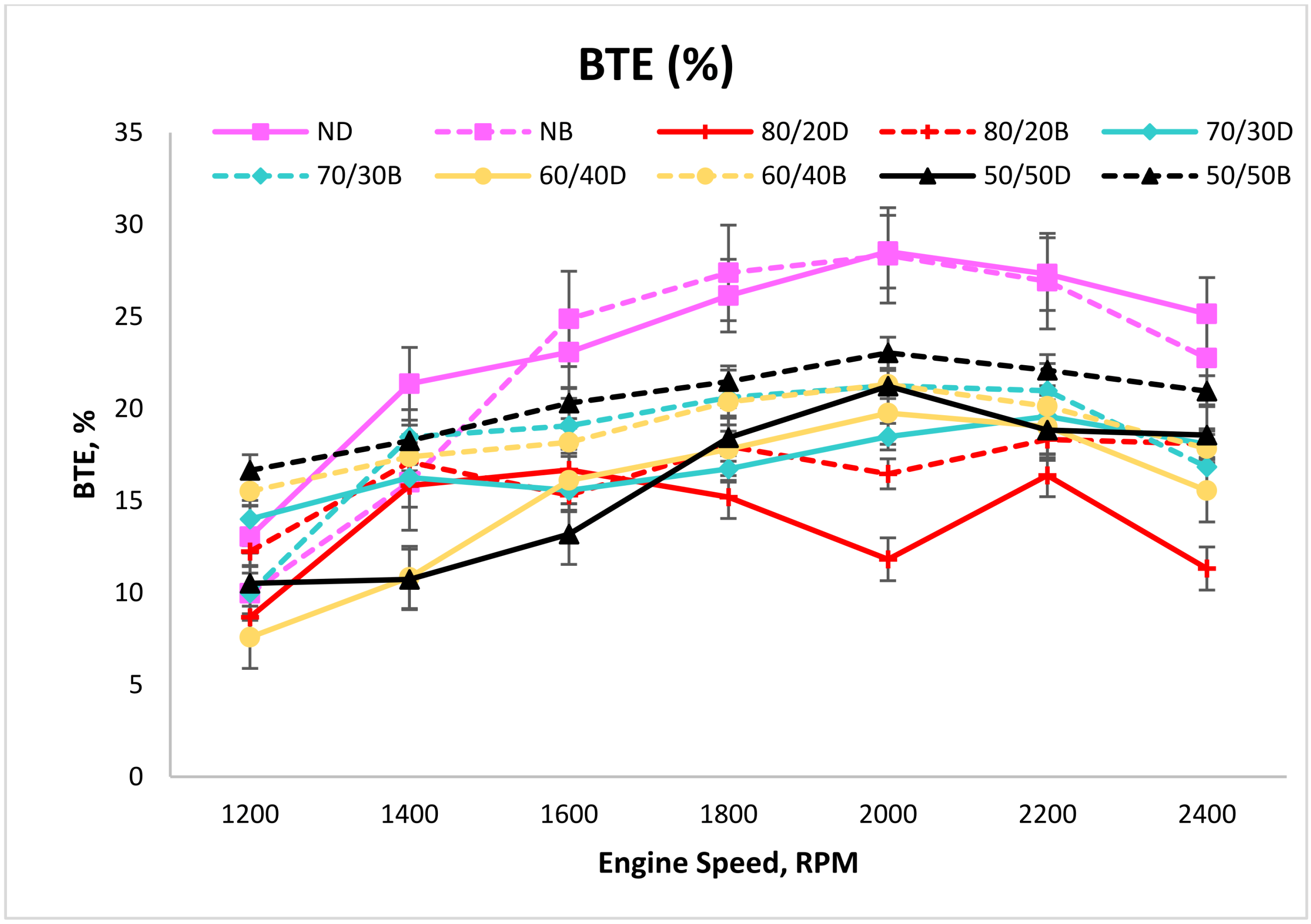
| Model | RT125DI-ES |
|---|---|
| Type | Water cooled 4 stroke horizontal diesel engine |
| Cylinder No | 1 |
| Bore x Stroke | 94 mm × 96 mm |
| Displacement | 666 cc |
| Max. Output | 9.2 kW/2400 rpm |
| Compression Ratio | 18:1 |
| Max. Torque | 4.7 kgf-m/1600 rpm |
| Combustion System | Direct injection |
| Battery | 12 V, 30 Amp |
| Dry Weight | 116 kg |
| Description | Value | |
|---|---|---|
| Exhaust Component | Measurement Range | Resolution |
| CO | 0.000–10.00 vol.% | 0.001 vol.% |
| CO2 | 0.00–18.00 vol.% | 0.01 vol.% |
| HC | 0–9999 ppm vol. | 1 ppm vol. |
| NO | 0–5000 ppm vol. | ≤1 ppm vol. |
| Coating Mixtures | Fuel | Acronym | Note |
|---|---|---|---|
| Non-Coated | Diesel B100 Palm | ND NB | Non-Coated Diesel Non-Coated Biodiesel |
| Coated 90% Y2O3·ZrO2 + 10% Al2O3·SiO2 | Diesel B100 Palm | 90/10D 90/10B | 90/10 Diesel 90/10 Biodiesel |
| Coated 80% Y2O3·ZrO2 + 20% Al2O3·SiO2 | Diesel B100 Palm | 80/20D 80/20B | 80/20 Diesel 80/20 Biodiesel |
| Coated 70% Y2O3·ZrO2 + 30% Al2O3·SiO2 | Diesel B100 Palm | 70/30D 70/30B | 70/30 Diesel 70/30 Biodiesel |
| Coated 60% Y2O3·ZrO2 + 40% Al2O3·SiO2 | Diesel B100 Palm | 60/40D 60/40B | 60/40 Diesel 60/40 Biodiesel |
| Coated 50% Y2O3·ZrO2 + 50% Al2O3·SiO2 | Diesel B100 Palm | 50/50D 50/50B | 50/50 Diesel 50/50 Biodiesel |
| Properties | Diesel | Diesel B100 Palm |
|---|---|---|
| Density at 18 °C (g/m3) | 0.8210 | 0.8833 |
| Kinematic viscosity at 35 °C (mm2/s) | 2.5 | 4.30 |
| Calorific value (kJ/kg) | 42,950 | 38,108 |
| Cetane number | 46 | 52 |
| Flash point (°C) | 50 | 140 |
Publisher’s Note: MDPI stays neutral with regard to jurisdictional claims in published maps and institutional affiliations. |
© 2021 by the authors. Licensee MDPI, Basel, Switzerland. This article is an open access article distributed under the terms and conditions of the Creative Commons Attribution (CC BY) license (https://creativecommons.org/licenses/by/4.0/).
Share and Cite
Ramasamy, N.; Kalam, M.A.; Varman, M.; Teoh, Y.H. Effect of Thermal Barrier Coating on the Performance and Emissions of Diesel Engine Operated with Conventional Diesel and Palm Oil Biodiesel. Coatings 2021, 11, 692. https://doi.org/10.3390/coatings11060692
Ramasamy N, Kalam MA, Varman M, Teoh YH. Effect of Thermal Barrier Coating on the Performance and Emissions of Diesel Engine Operated with Conventional Diesel and Palm Oil Biodiesel. Coatings. 2021; 11(6):692. https://doi.org/10.3390/coatings11060692
Chicago/Turabian StyleRamasamy, Navin, Mohammad Abul Kalam, Mahendra Varman, and Yew Heng Teoh. 2021. "Effect of Thermal Barrier Coating on the Performance and Emissions of Diesel Engine Operated with Conventional Diesel and Palm Oil Biodiesel" Coatings 11, no. 6: 692. https://doi.org/10.3390/coatings11060692
APA StyleRamasamy, N., Kalam, M. A., Varman, M., & Teoh, Y. H. (2021). Effect of Thermal Barrier Coating on the Performance and Emissions of Diesel Engine Operated with Conventional Diesel and Palm Oil Biodiesel. Coatings, 11(6), 692. https://doi.org/10.3390/coatings11060692







